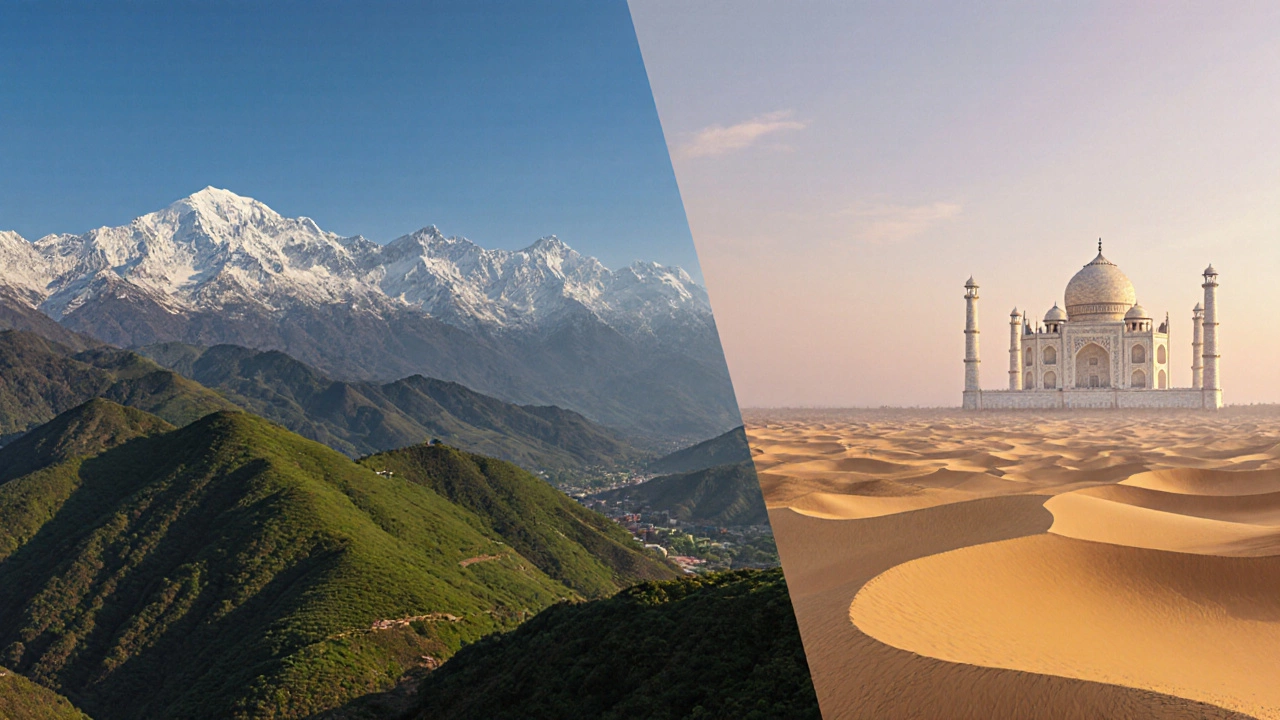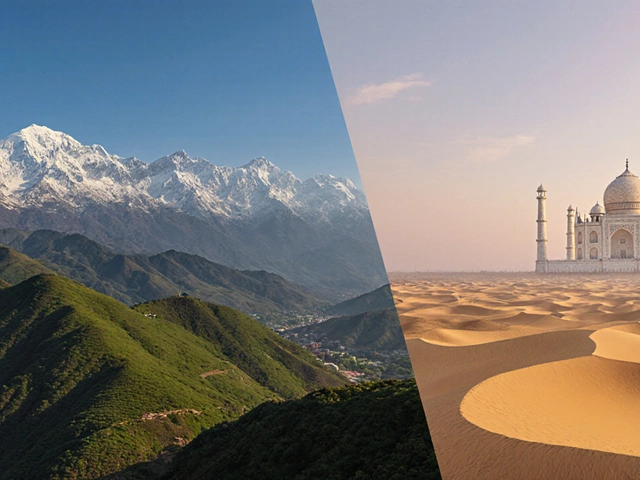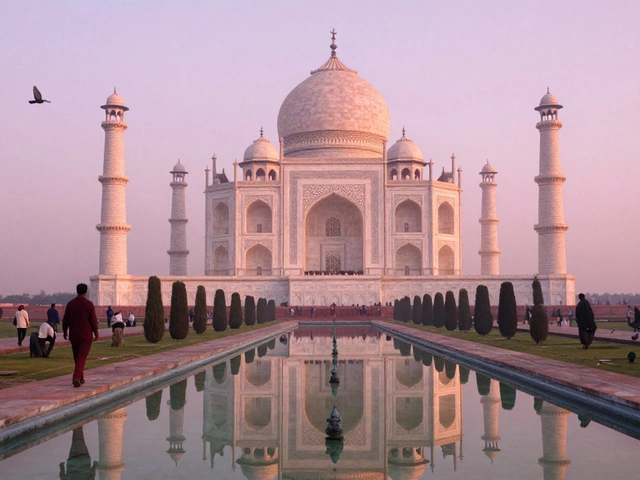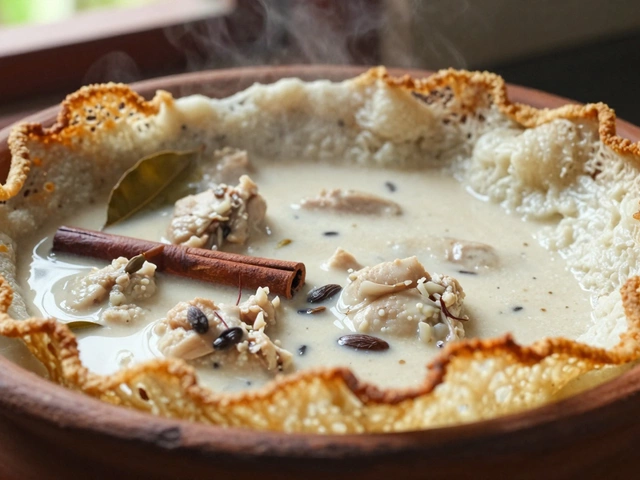North India spans a diverse stretch from the snow‑capped peaks of the Himalayas to the sun‑baked deserts of Rajasthan. Its weather swings dramatically throughout the year, so choosing the right window can make the difference between a soggy trek and a perfect sunrise over a valley. If you’re wondering when to book that ticket, keep reading - we’ll break down every season, the regions that shine, and the festivals that turn ordinary trips into unforgettable experiences. North India travel isn’t one‑size‑fits‑all; it’s about matching climate, activities, and cultural moments to your personal vibe.
Understanding North India's Climate Zones
The region is a patchwork of micro‑climates. The high‑altitude Himalayas stay chilly year‑round, while the plains around Delhi endure scorching summers and foggy winters. Rajasthan turns into a desert furnace from April to June, whereas Uttarakhand and Himachal Pradesh enjoy milder summers and heavy monsoon rains.
Because of these variations, most travel guides split the year into four broad seasons: Spring (March‑May), Summer (June‑August), Monsoon (July‑September) and Winter (October‑February). Each season offers a distinct blend of temperature ranges, daylight hours, and crowd levels. Below is a quick cheat‑sheet before we dive deeper.
Season‑by‑Season Breakdown
- Spring (March‑May): Pleasant temperatures (15‑30°C) across most plains, blooming rhododendrons in the hills, and several colorful festivals like Holi.
- Summer (June‑August): Heat spikes (35‑45°C) in the lowlands, but hill stations such as Shimla, Manali, and Nainital become cool retreats (20‑25°C). This is also the peak monsoon period for the eastern sub‑region.
- Monsoon (July‑September): Heavy showers especially in Uttarakhand and Himachal, lush greenery, and reduced tourist crowds. Road closures are common in high‑altitude passes.
- Winter (October‑February): Chilly to sub‑zero in the mountains (‑2 to 10°C) and crisp, dry weather in the plains (5‑20°C). Ideal for wildlife safaris in Jim Corbett and desert festivals in Jaisalmer.
Comparing Seasons, Weather, and Key Attractions
| Season | Typical Temperature (°C) | Rainfall | Best Regions | Must‑Do Event |
|---|---|---|---|---|
| Spring | 15‑30 | Low | Delhi, Agra, Jaipur, Chandigarh | Holi (Mar) |
| Summer | 35‑45 (plains) / 20‑25 (hill stations) | Moderate | Shimla, Manali, Nainital, Mussoorie | Leh‑Ladakh Festival (Jun) |
| Monsoon | 22‑30 (lowlands) / 15‑20 (hills) | High | Uttarakhand, Himachal, Garhwal | Rann Utsav (July‑Sept) - Though in Gujarat, gives context for rain‑filled festivals |
| Winter | 5‑20 (plains) / -2‑10 (mountains) | Low | Jaipur, Jaisalmer, Jim Corbett, Kashmir | Pushkar Camel Fair (Nov) |
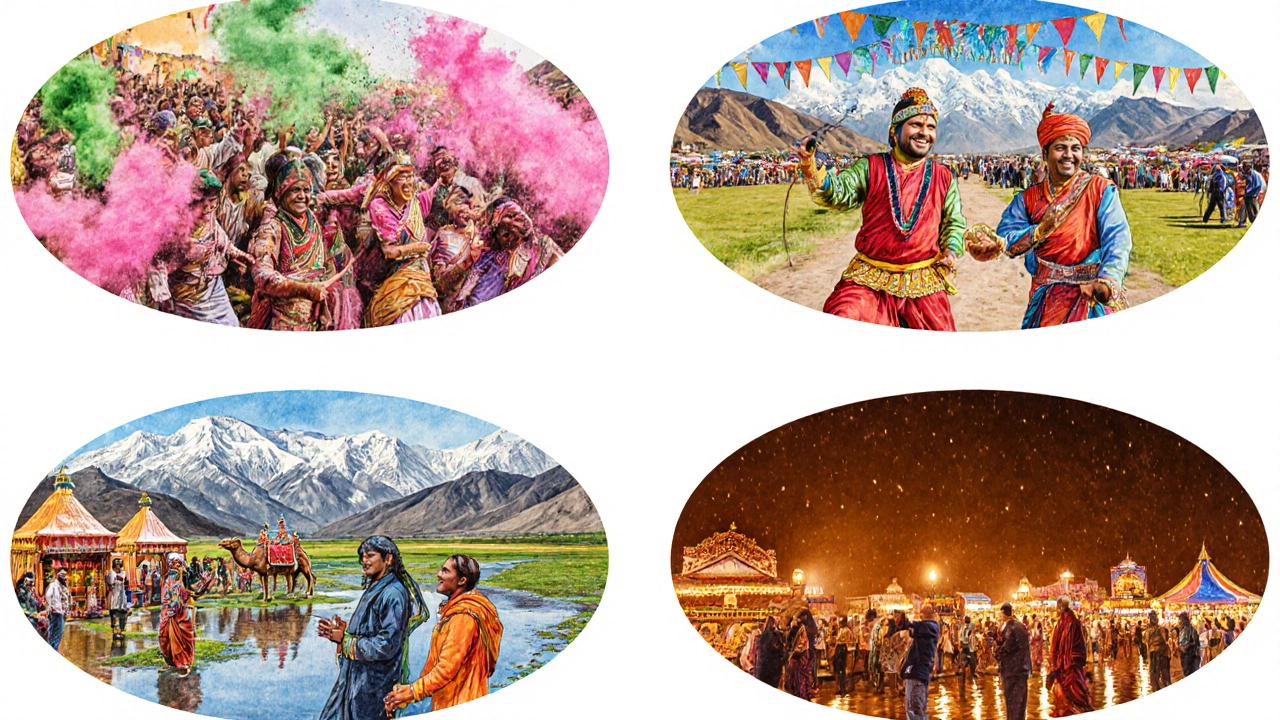
Top Festivals by Season
Festivals are the heartbeat of North India. Timing your visit around them adds color, music, and unforgettable memories.
- Spring: Holi - the global “Festival of Colors” in Mathura, Vrindavan, and Delhi.
- Summer: Leh‑Ladakh Festival - showcases Tibetan culture, usually in early June.
- Monsoon: Rann Utsav - though technically in Gujarat, the monsoon vibe spreads to nearby North Indian hill stations where local fairs celebrate rain‑fed harvests.
- Winter: Pushkar Camel Fair - a massive livestock market mixed with folk music, held in November.
- Winter: Kashmir Snow Festival - spectacular ice sculptures and sled rides in February.
Destination Highlights for Each Season
Spring - The Golden Triangle (Delhi‑Agra‑Jaipur) is ideal. The heat is tolerable, the Taj Mahal glows under clear skies, and the city gardens burst into bloom. Add a day trip to the UNESCO‑listed Ranthambore National Park for early‑season wildlife spotting before the heat drives animals deeper.
Summer - Escape the plains by heading to hill stations. Manali offers cool river valleys, paragliding, and the Rohtang Pass snow‑cap (if open). Shimla retains a British‑era charm, while the lesser‑known Spiti Valley provides an otherworldly desert‑mountain landscape.
Monsoon - The rain‑softened hills of Uttarakhand are at their greenest. Trek to the sacred town of Rishikesh for yoga by the Ganges, or explore the waterfalls of Kempty and Bhalei. Caution: check road conditions before planning high‑altitude treks.
Winter - Desert cities like Jaisalmer and Jodhpur become comfortably cool (10‑20°C) for desert safaris and night‑time stargazing. Meanwhile, the snow‑covered valleys of Kashmir open up for pangong lake boat rides and ski resorts in Gulmarg.
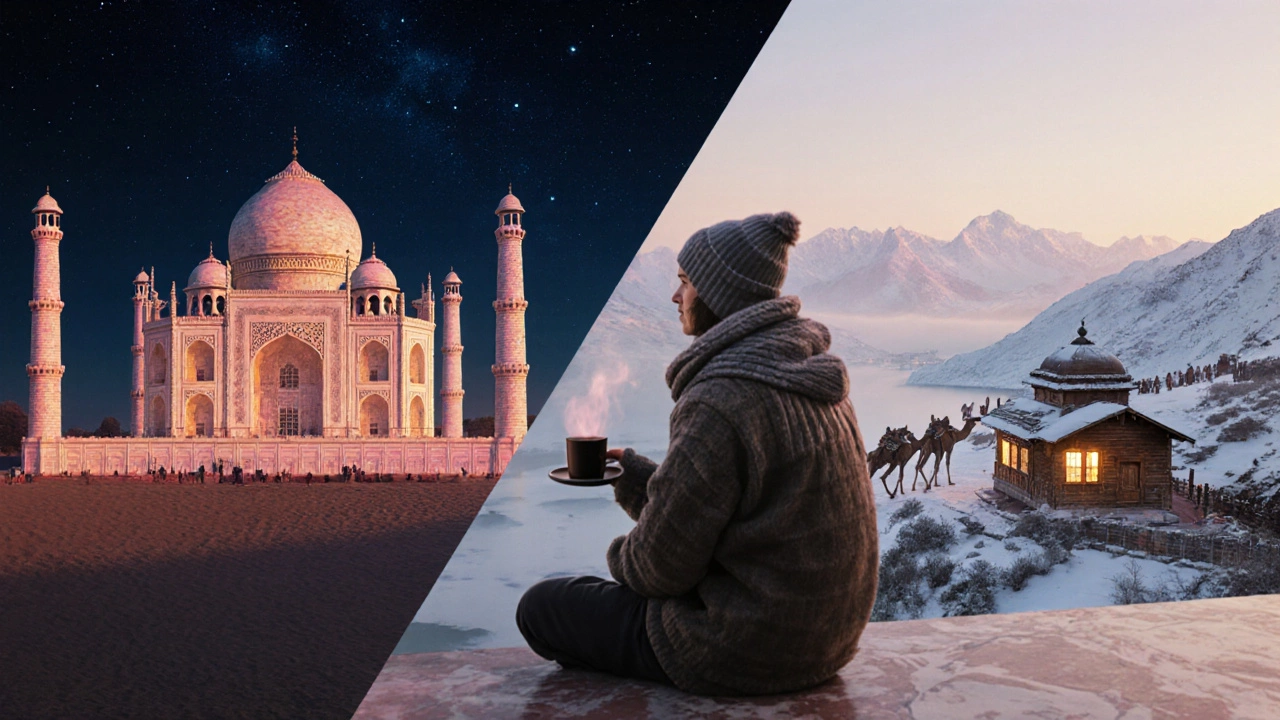
Practical Tips for Planning Your Trip
- Book early for festivals. Hotels fill up fast during Holi and the Pushkar Fair; aim to reserve at least 2‑3 months ahead.
- Pack for layers. Even in summer, evenings at hill stations can dip to 12°C. A light jacket, raincoat, and sun‑hat cover most scenarios.
- Check altitude sickness info. If traveling above 2,500 m (e.g., Leh, Spiti), spend a day acclimatizing in a lower‑altitude town.
- Transport. Trains run year‑round on the Delhi‑Mumbai corridor, but monsoon landslides can disrupt mountain rail lines; consider road hires or flights for the Himalayas.
- Health. Carry a basic medical kit, especially anti‑diarrheal tablets and any prescribed altitude medication.
Frequently Asked Questions
When is the cheapest time to travel to North India?
The shoulder months of March‑April and late October‑early November usually offer the best price‑performance mix. Flights, train tickets, and accommodation are 20‑30 % cheaper than peak festival periods.
Is it safe to travel during the monsoon?
Monsoon travel is safe if you stay on well‑maintained roads and avoid high‑altitude passes that are prone to landslides. Stick to major towns, keep an eye on local weather alerts, and have a flexible itinerary.
What clothing should I bring for a winter trip to the Himalayas?
Layering is key: thermal base wear, a fleece mid‑layer, and a waterproof insulated jacket. Pack gloves, a beanie, and warm socks. Even if daytime reaches 10 °C, evenings can drop below freezing.
Can I see the Taj Mahal in the winter?
Yes - winter mornings are often clear, offering crisp views of the marble monument with fewer crowds. Just bring a warm coat for early‑hour visits.
Do I need a visa to travel across different states in North India?
No. India has a single‑country visa system. Once you have a valid Indian visa, you can move freely between states like Rajasthan, Uttarakhand, Himachal, and Kashmir.
Now you have a season‑by‑season roadmap, key festivals, and practical advice. Whether you crave snow‑capped peaks, desert sunsets, or vibrant street celebrations, North India has a perfect window waiting for you. Pack accordingly, plan ahead, and let the region’s contrasts surprise you.
